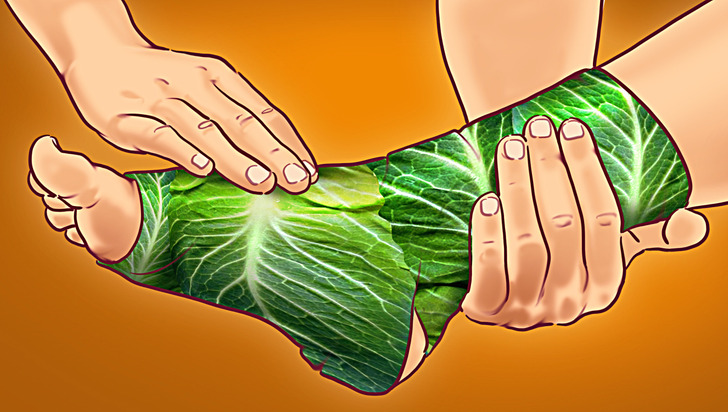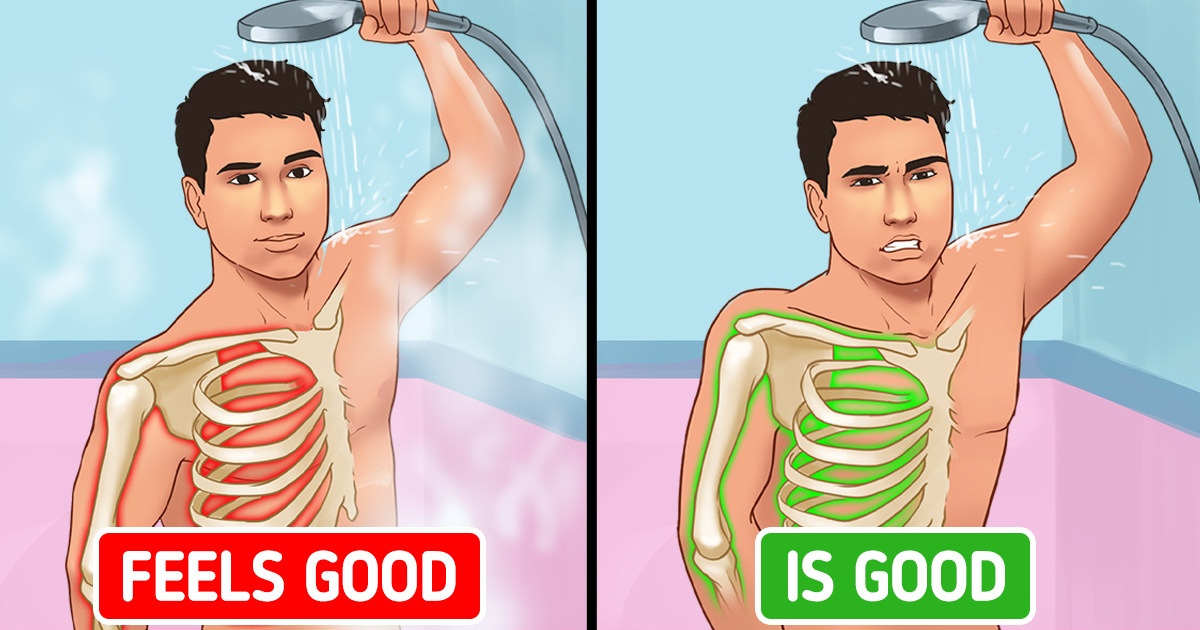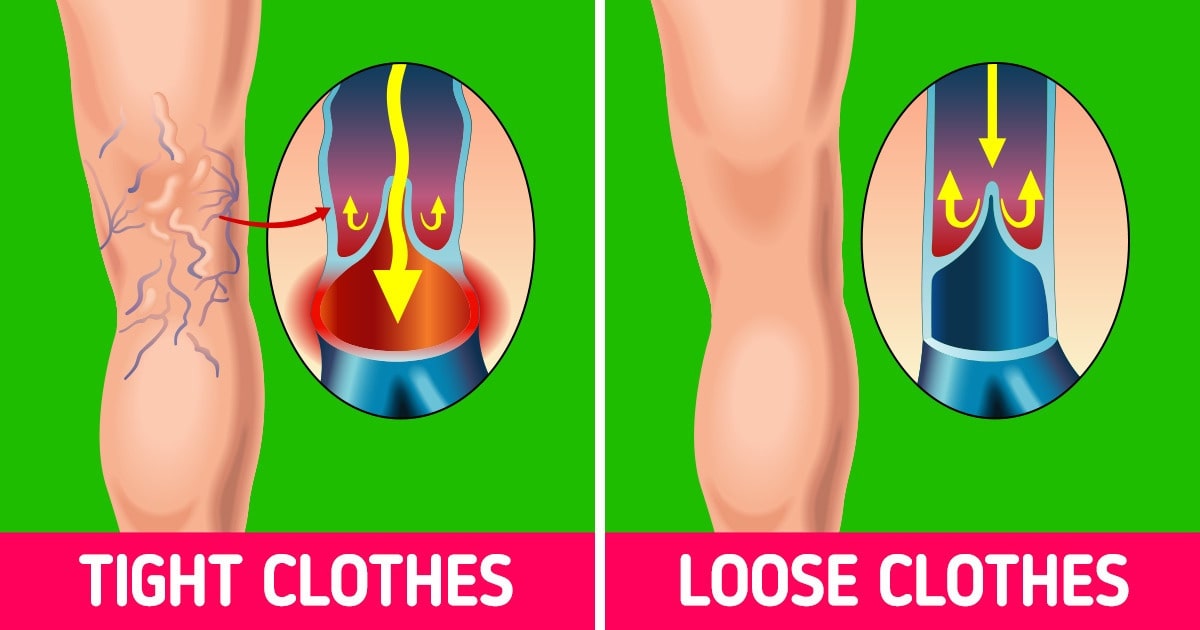Our bodies often communicate subtle messages about our health long before more severe symptoms appear. Minor changes that might seem insignificant—such as an unusual line on your nail or a shift in handwriting—can sometimes be early indicators of dangerous diseases. In an age where early detection can be critical for effective treatment, understanding and recognizing these signs is essential. This comprehensive guide explores six minor body changes that could potentially signal serious underlying conditions. By being proactive and informed, you can seek medical advice promptly and take control of your health.
With healthcare costs rising and early diagnosis playing a pivotal role in treatment success, paying attention to your body’s signals has never been more important. In this post, we delve into six specific changes, providing insights on what they might mean and when to consult a professional. For additional information on recognizing early symptoms, visit reputable sources such as Mayo Clinic or WebMD.
Signal of Dangerous Disease
Eye Anomalies in Flash Photography: When Only One Eye Appears Red

Have you ever noticed that in photos taken with a flash, only one of your eyes appears red? While the “red-eye” effect is common and often a result of the camera flash reflecting off the blood-rich retina, an asymmetrical red-eye occurrence could indicate an underlying issue.
What It Could Mean
If you consistently notice that only one eye turns red in flash photography, it might be more than just a photography quirk. Potential causes include:
- Subconjunctival Hemorrhage: A small blood vessel may have burst, causing localized bleeding in the white part of your eye. Although this condition is often harmless and resolves on its own, recurrent episodes should be evaluated by an ophthalmologist.
- Vascular or Inflammatory Conditions: Differences in blood vessel structure or inflammation due to conditions like uveitis (inflammation of the uvea) may cause one eye to appear redder than the other.
When to Seek Medical Advice
If you experience additional symptoms such as pain, vision changes, or persistent redness, consult an eye care professional immediately. Regular eye examinations can help rule out any serious conditions. For further reading on eye health and related symptoms, check out the American Academy of Ophthalmology.
Nail Discoloration: What a Black Line on Your Nail Might Indicate
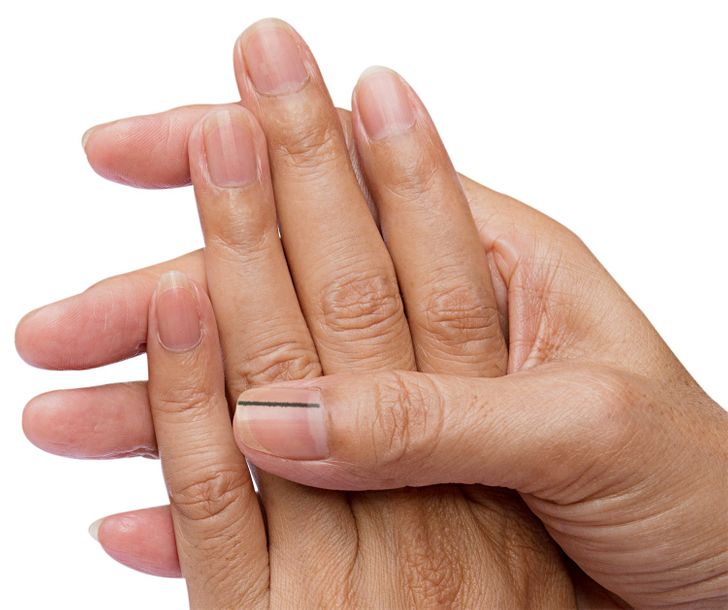
A seemingly harmless black line on your nail could be a warning sign of a more serious condition. Nails are often called “windows to your health” because they can reveal clues about underlying issues in the body.
Potential Health Implications
A black or dark line running down the nail can be caused by various factors:
- Melanoma: One of the most concerning causes is subungual melanoma, a type of skin cancer that occurs under the nail. Although it’s relatively rare, early detection is crucial for effective treatment.
- Trauma or Injury: Sometimes a dark line can result from injury to the nail matrix, where the nail is formed.
- Nutritional Deficiencies or Other Medical Conditions: Certain vitamin deficiencies or systemic conditions can cause changes in nail color and texture.
What to Do Next
If you notice a persistent or widening dark line on your nail, it’s important to consult a dermatologist. Early detection of melanoma can be life-saving. For more detailed information on nail changes and potential health risks, visit the American Cancer Society or Mayo Clinic’s guide on nail health.
Neurological Warning Signs: A Sudden Change in Handwriting

A sudden and noticeable change in your handwriting might be more than just a temporary quirk. Handwriting is a complex motor skill that can be affected by neurological conditions, and any abrupt change could warrant further investigation.
Possible Underlying Conditions
Changes in handwriting can be linked to a variety of neurological issues, including:
- Parkinson’s Disease: Often characterized by a tremor, rigidity, and slowed movement, Parkinson’s can also cause handwriting to become smaller and less legible—a phenomenon known as micrographia.
- Stroke or Transient Ischemic Attack (TIA): A sudden change in handwriting might be an early sign of a stroke, where the brain’s ability to control motor functions is compromised.
- Other Neurological Disorders: Conditions such as multiple sclerosis (MS) or even early signs of dementia can affect fine motor skills, leading to noticeable alterations in handwriting.
Monitoring Your Health
If you or a loved one experiences a sudden or progressive change in handwriting, especially when accompanied by other symptoms like muscle weakness or coordination problems, seek medical evaluation promptly. Early intervention is critical. For additional insights into neurological symptoms, refer to resources from the National Institute of Neurological Disorders and Stroke (NINDS).
Behavioral Shifts as Health Indicators: When Compulsive Journaling Becomes a Concern

While journaling can be a healthy outlet for self-expression, an overwhelming, compulsive need to record every detail of your life might be an unexpected sign of deeper neurological or psychological changes.
Understanding the Behavior
An intense preoccupation with journaling or documenting every moment may seem benign, but in some cases, it could be linked to:
- Obsessive-Compulsive Disorder (OCD): This condition is characterized by repetitive behaviors and intrusive thoughts. A sudden increase in compulsive journaling might be a manifestation of underlying anxiety or OCD.
- Early Cognitive Changes: In rare cases, significant changes in behavior and routine—such as an excessive need to record details—could be early indicators of cognitive decline or other neurological disorders.
- Manic Episodes: During manic phases of bipolar disorder, individuals may exhibit hyper-productivity and an uncontrollable urge to document their thoughts and activities.
When to Take Action
If this behavior is new, disruptive, or accompanied by other changes in mood or cognitive function, consider consulting a mental health professional. Early intervention can help manage symptoms and improve quality of life. For more detailed information on behavioral changes and mental health, visit the National Institute of Mental Health (NIMH).
Persistent, Unquenchable Thirst: Could It Be a Symptom of Diabetes or Kidney Disease?

Feeling constantly thirsty—even when you’re adequately hydrated—can be more than just a minor annoyance. Persistent, unquenchable thirst is a common symptom associated with several dangerous diseases, particularly metabolic and renal conditions.
Underlying Medical Concerns
Unquenchable thirst can indicate a range of health issues:
- Diabetes: Both type 1 and type 2 diabetes can cause high blood sugar levels, leading to increased thirst and frequent urination. This is one of the hallmark symptoms of uncontrolled diabetes.
- Kidney Disease: The kidneys play a crucial role in maintaining fluid balance. When kidney function is compromised, toxins can build up in the blood, leading to dehydration and persistent thirst.
- Other Metabolic Disorders: Conditions such as hypercalcemia (elevated calcium levels in the blood) may also manifest as increased thirst.
The Importance of Early Diagnosis
If you notice that you are constantly thirsty despite drinking plenty of water, it is important to seek medical advice. Early diagnosis can lead to better management of conditions like diabetes and kidney disease, potentially preventing more severe complications. For more comprehensive information, explore resources from the American Diabetes Association or National Kidney Foundation.
Abdominal Warning Signs: Unexplained Pain in the Navel Area
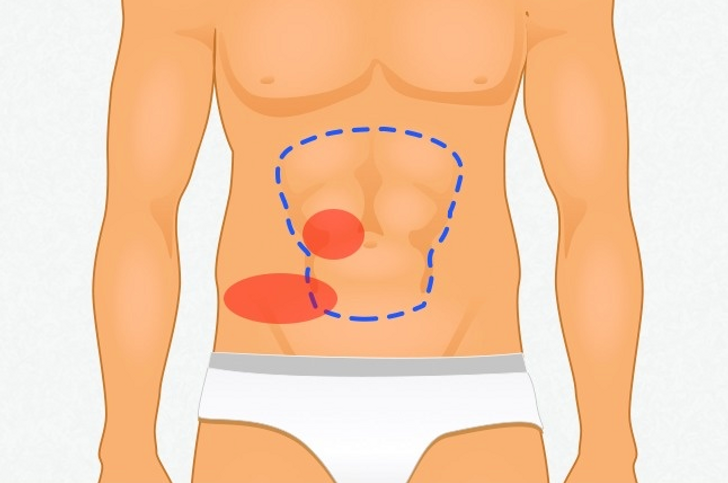
Pain around the navel might be dismissed as a common stomach ache or digestive upset, but when it is persistent or severe, it could be indicative of a more serious underlying condition.
What This Symptom Might Signal
Unexplained pain in the navel area can be associated with several conditions, including:
- Gastrointestinal Disorders: Inflammation or infection of the digestive tract, such as Crohn’s disease or appendicitis, can cause localized pain near the navel.
- Hernias: An umbilical hernia, which occurs when part of the intestine protrudes through the abdominal muscles near the navel, can cause discomfort and pain.
- Metabolic and Inflammatory Conditions: Rarely, persistent navel pain may be a sign of systemic inflammatory conditions or even early signs of certain cancers.
Seeking Professional Evaluation
Any unexplained, persistent pain in the navel area should not be ignored. While it might be a minor issue in some cases, it’s important to consult with a healthcare professional for a proper diagnosis and treatment plan. For more detailed insights into abdominal pain and its potential causes, refer to the Cleveland Clinic’s resources on abdominal pain.
Conclusion: Stay Informed and Proactive About Your Health
Our bodies are incredibly complex, and even the slightest changes can provide critical insights into our overall health. Whether it’s a red-eye anomaly in a flash photo, a dark line appearing on your nail, a sudden change in handwriting, compulsive journaling behaviors, persistent thirst, or unexplained navel pain, these minor signs should not be overlooked. Recognizing and understanding these early warning signals can lead to timely medical intervention and potentially save lives.
Key Takeaways
- Early Detection is Vital: Paying attention to subtle changes in your body can help detect dangerous diseases before they progress.
- Consult Healthcare Professionals: If you notice any of these symptoms, it is important to seek professional advice rather than ignoring or dismissing them.
- Stay Educated: Regular check-ups and staying informed through credible sources such as Mayo Clinic, WebMD, and the American Cancer Society can empower you to make proactive health decisions.
- Lifestyle and Preventive Measures: Incorporating healthy habits, such as balanced nutrition, regular exercise, and stress management, can improve your overall well-being and potentially reduce the risk of developing serious conditions.
While the minor body changes discussed in this article are not definitive diagnoses, they serve as important red flags that warrant further investigation. Understanding these signs and their possible implications is a crucial step in maintaining long-term health, especially in a world where dangerous diseases can develop silently.
Remember, your health is your most valuable asset. By paying attention to these early warning signs and seeking medical guidance when necessary, you take a proactive approach toward disease prevention and overall wellness. Stay vigilant, informed, and committed to regular health check-ups.
For further reading on recognizing early signs of dangerous diseases and how to protect your health, consider exploring additional resources such as the Centers for Disease Control and Prevention (CDC) and the National Institutes of Health (NIH).
